If you’re a fan of Korean cuisine and vegan delights, you’re in for a treat!
Today, we’re diving into a delicious comparison between Trader Joe’s Kimbap and Costco’s Fried Tofu & Vegetable Kimbap.
Both options offer a convenient, tasty way to enjoy vegan Korean sushi, but which one comes out on top? Let’s find out!
Save and Share this showdown
Product Overview
Trader Joe’s Kimbap: Korean Tofu and Vegetable Seaweed Rice Roll
- Packaging: Individual rolls
- Weight: 8.11 oz per roll
- Price: $3.99 per roll
- Made in: Republic of Korea (South Korea)
- Availability: Most Stores Limited to two per customer due to high demand
- Description: It’s a vegan-friendly delight packed with pickled radish, spinach, carrots, and tofu. Perfect for a quick meal or snack.
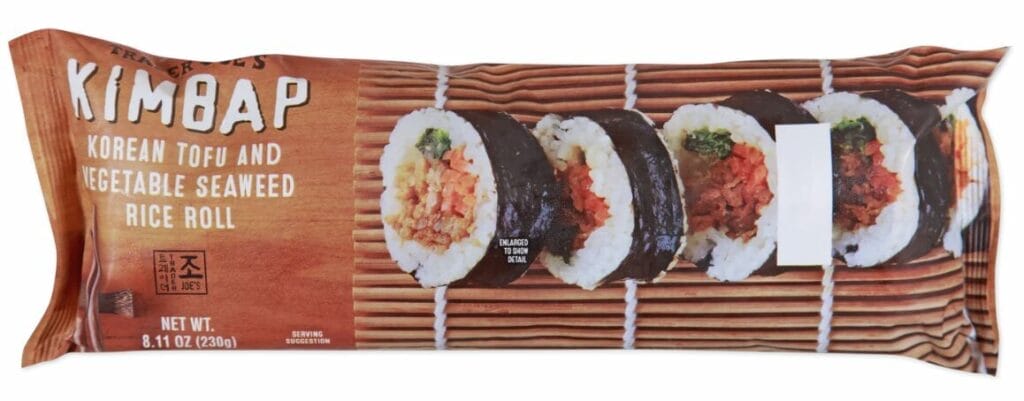
Costco’s Fried Tofu & Vegetable Kimbap
- Packaging: Bulk pack of 6 rolls individually packaged
- Weight: 8.11 oz per roll
- Price: $18.99
- Made in: South Korea
- Availability: Available in bulk
- Description: It’s a delicious mix of fried tofu and vegetables (radish, carrots, burdock, spinach), rolled tightly to ensure it doesn’t fall apart. It’s a fantastic option for families or meal prep.
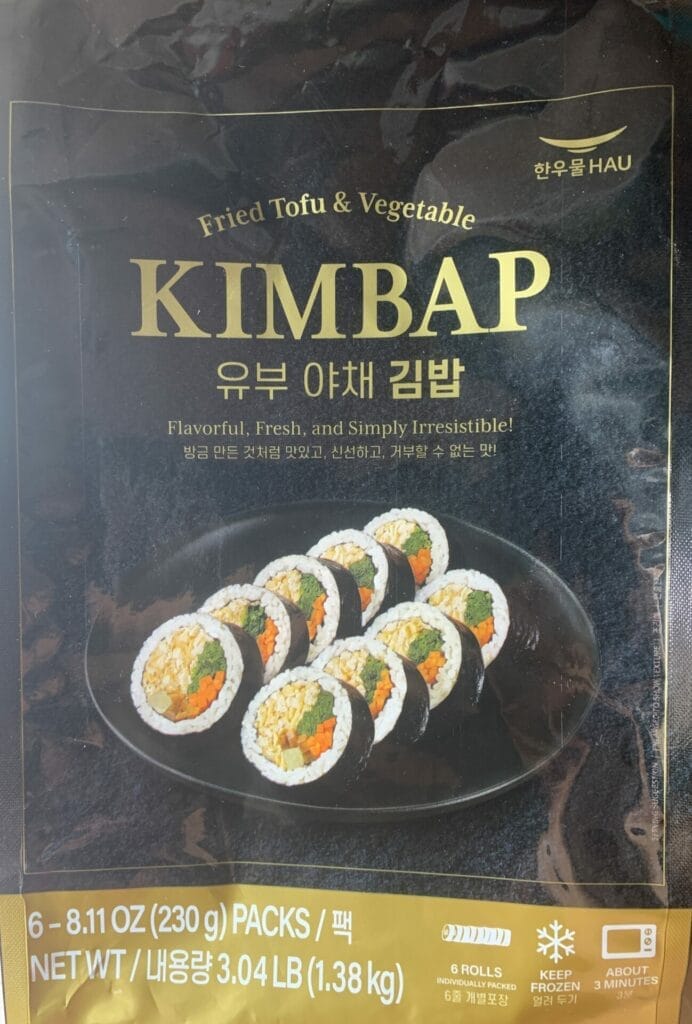
Price Comparison
When it comes to price, Costco offers a better deal per roll, thanks to the bulk packaging. Here’s a quick breakdown:
- Costco: $18.99 for 6 rolls ($3.17 per roll)
- Trader Joe’s: $3.99 per roll
While Trader Joe’s is a bit pricier per roll, it’s a great option for those who don’t need six rolls at once.
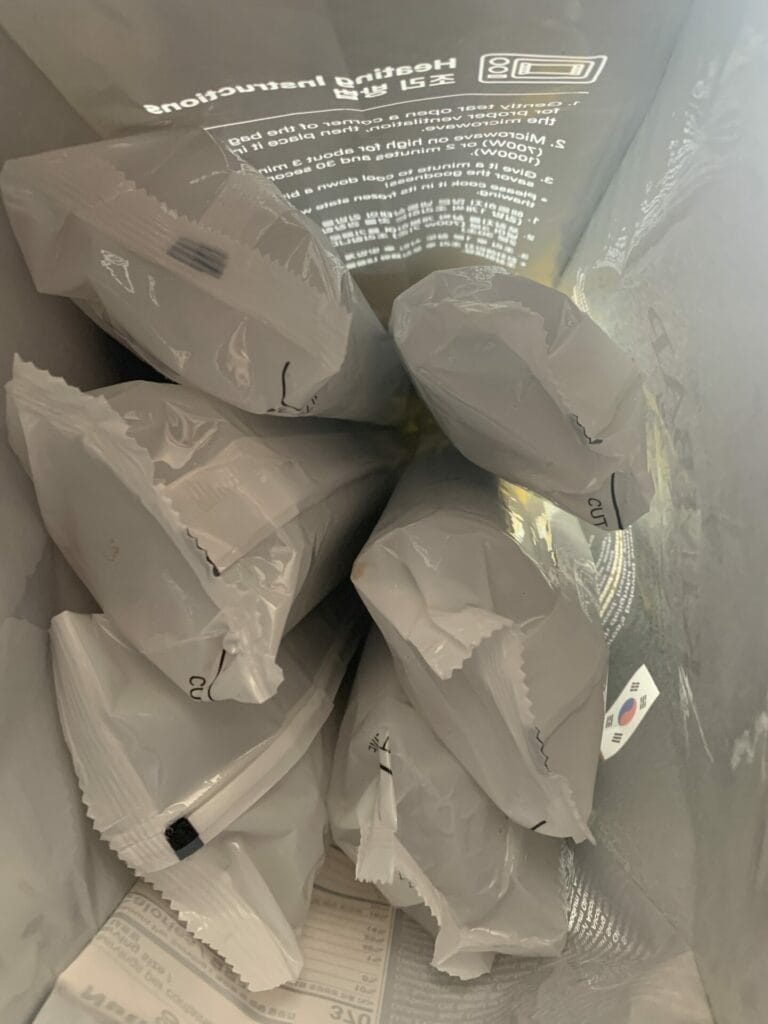
Variety and Ingredients
Both Trader Joe’s and Costco’s Kimbap offer the traditional flavor of Korean sushi, known as Kimbap. The main ingredients in these vegan-friendly options include:

- Trader Joe’s: Pickled radish, spinach, carrots, and tofu.
- Costco: Pickled radish, carrots, burdock, spinach and tofu.

What sets Korean Kimbap apart from traditional Japanese sushi is the use of savory rice and a wider variety of vegetables.
Unlike Japanese sushi, which often focuses on raw fish, Kimbap is usually filled with cooked ingredients and seasoned with sesame oil and salt, giving it a distinctive flavor.
This makes Kimbap not only a great vegan option but also a deliciously different take on sushi.
Taste and Texture
Costco:
- Texture: Rolled tightly, ensuring the Kimbap doesn’t fall apart from plate to mouth.
- Flavor: More vegetables and less rice, giving a stronger, more vibrant taste.

Trader Joe’s:
- Texture: Rolled a bit looser, which can cause the roll to fall apart before it reaches your mouth.
- Flavor: More rice and fewer vegetables, resulting in a milder, blander flavor.
In terms of taste and texture, Costco wins with its tight rolls and flavorful filling.
Preparation and Convenience
Both options are incredibly easy to prepare:


- Instructions: Cut a corner of the packaging, microwave for a couple of minutes, and let it sit for a minute. Voila! A super easy, convenient, and nutritious meal.
- Serving Tips: For an extra flavor boost, try dipping the Kimbap in soy sauce with Korean dried red pepper flakes, soy sauce with wasabi or Korean mustard, or make a gochujang mayo or Sriracha mayo for dipping. These additions can enhance the taste and provide a delightful kick.

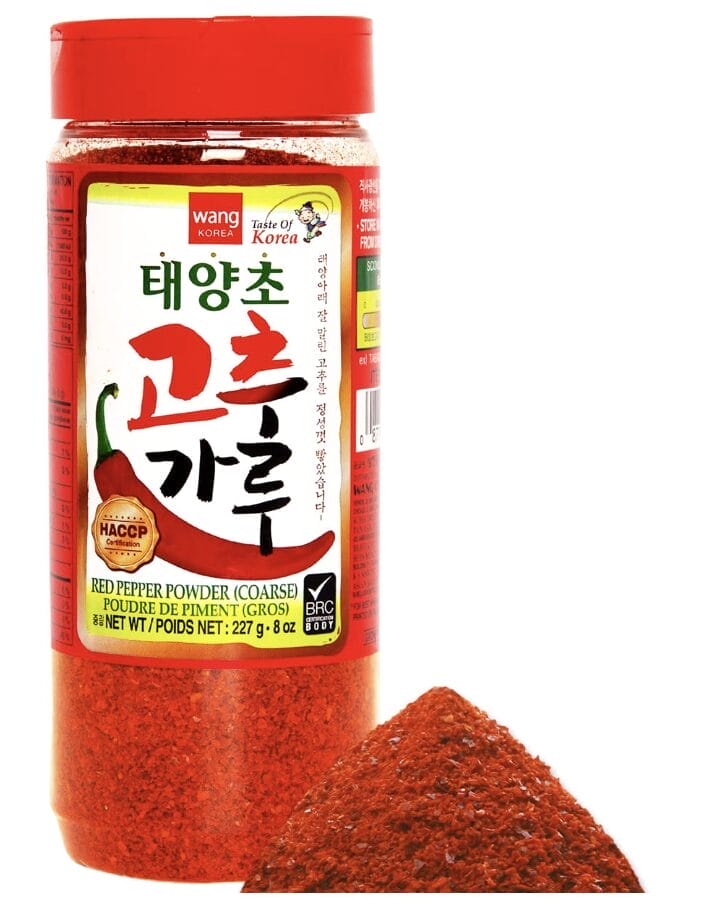


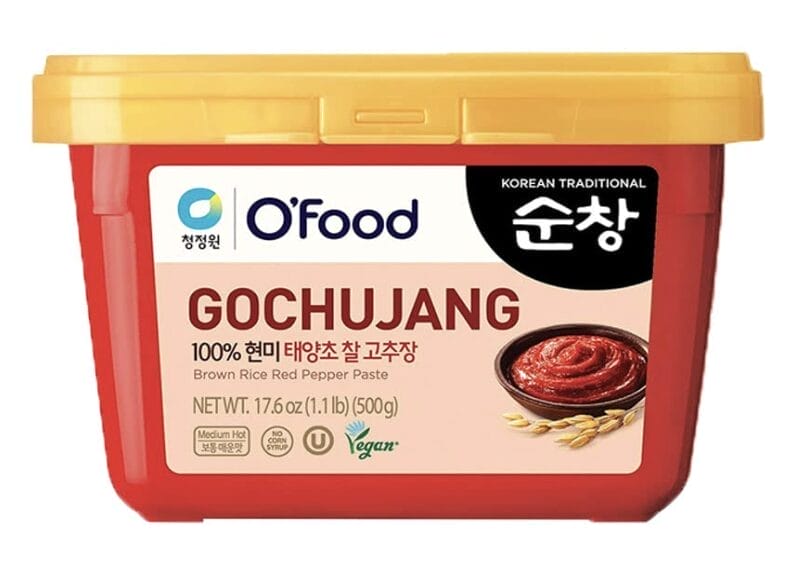
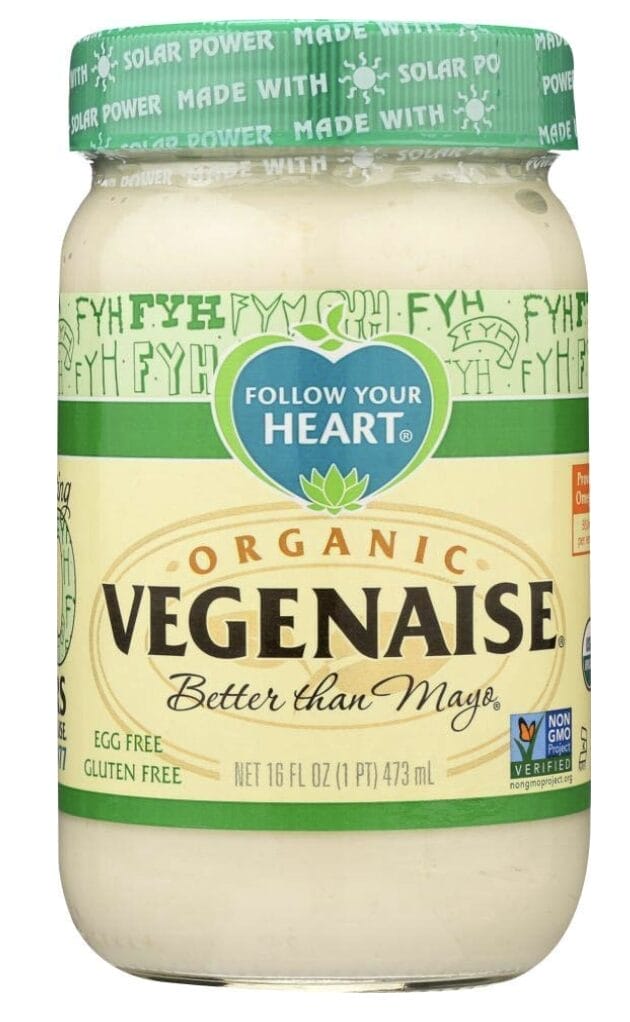

Personal Experience
I used to love traditional Korean kimbap but had a hard time finding vegan options. These two products changed that completely!
Thank you, Trader Joe’s, for bringing vegan Kimbap to the general public, and thank you, Costco, for making it more economical and even better tasting.
While I appreciate both, I have to say I enjoy Costco’s Kimbap more.
The tighter rolls and stronger flavors make it a clear winner in my book.
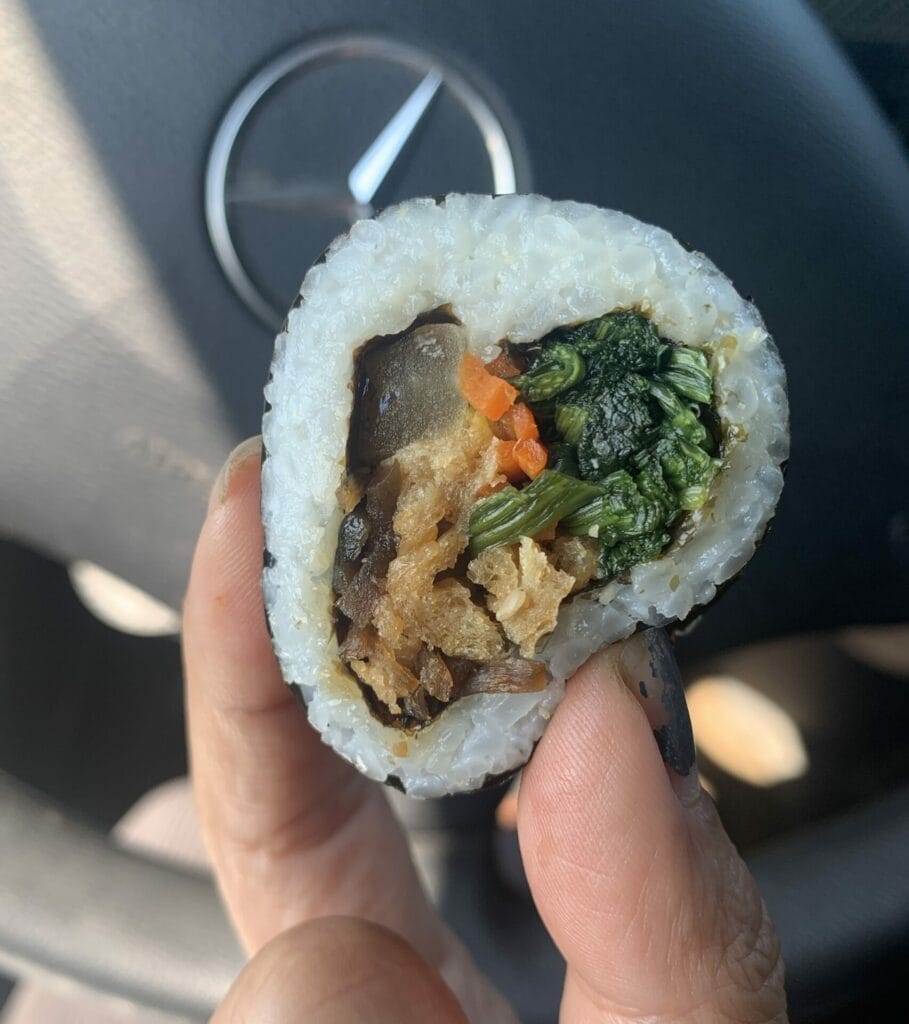
However, if freezer space is limited, Trader Joe’s Kimbap is still a fantastic option.
Plus, Trader Joe’s has such high demand that customers are limited to two rolls per purchase.
An employee once told me they receive two cases a day, and they sell out quickly!
Availability and Demand
- Costco: Reliable availability due to bulk packaging.
- Trader Joe’s: High demand and frequent sell-outs, reflecting the product’s popularity.
It’s great to see Trader Joe’s thriving and bringing unique products from all over the world for us to enjoy.
Their Kimbap is a hit, and it’s wonderful to see so many people enjoying it.
If you have a Trader Joe’s around and enjoy Korean cuisine, here’s a review for their Korean rice balls, Jumeokbap, you might be interested in knowing more about.
Cultural Significance
Kimbap holds a special place in Korean culture.
It’s a popular picnic and lunchbox food, often enjoyed during outings and celebrations.
The term “Kimbap” literally translates to “seaweed rice,” with “kim” meaning seaweed and “bap” meaning rice.
This dish is beloved for its versatility and convenience, much like how sushi is enjoyed in Japan.

The main difference between Kimbap and Japanese sushi lies in their ingredients and preparation.
While sushi rice is seasoned with vinegar, sugar, and salt, Kimbap rice is typically mixed with sesame oil and salt, giving it a distinctive flavor.
Additionally, Kimbap often includes ingredients like pickled radish, spinach, and carrots, which are less common in sushi.
Understanding these cultural nuances adds depth to our appreciation of these dishes and highlights the rich culinary traditions they represent.
Final Thoughts
In the showdown between Trader Joe’s and Costco’s Kimbap, Costco takes the lead with its better value, texture, and flavor.
But don’t count out Trader Joe’s—they offer a convenient, delicious option that’s perfect for smaller households or those with limited freezer space.
Both options have brought vegan Kimbap into my life, and I couldn’t be happier.
I encourage you to try both and see which one you prefer!
Have you tried Trader Joe’s or Costco’s Kimbap? Share your thoughts and experiences in the comments below! Don’t forget to subscribe to my blog for more vegan product reviews and comparisons.
Save and Share this showdown


And now, something totally unrelated but too fun not to share…
Totally Random But Totally Want Them
Nope, I don’t own these. But every week I stumble across a few random Amazon finds that are too fun, quirky, or useful-looking not to share. I might not need them… but I kinda want them. And maybe you will too?
Taco Toaster

I don’t own this, but it’s a crunchy convenience.
Toast your tortillas directly in the toaster for quick and easy tacos. It’s a game-changer for taco nights.
As an Amazon Associate, I earn a small commission from qualifying purchases at no additional cost to you.



I believe the Kimbap at Trader Joe’s is gluten free. The one at Costco is not.
Hi Samantha! I think you might be correct! Although most traditional soy sauce contains gluten, there are certain Korean soy sauces that do not contain gluten. Since the ingredient list does not list wheat as an ingredient, Trader Joe’s Kimbap shows to be gluten-free! Thank you so much for being so detailed and sharing your knowledge. Have you tried them both? Which is your favorite?